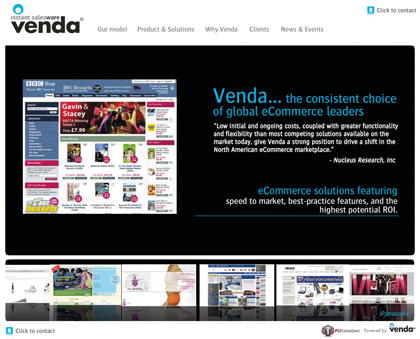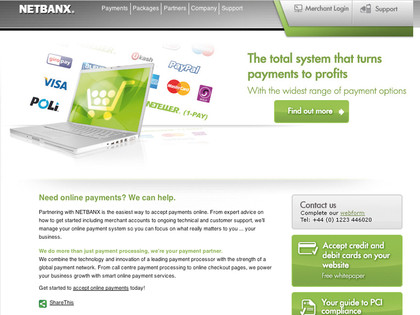Easy ways to take payments via your site
The world of payment providers explained

Recession, global competition, busy consumers, fraud, investors seeking to reduce costs. Not since the early faltering steps of ecommerce has there been so much pressure to show tangible results and realise every last ounce of value.
Every business with a sales presence online is aware of the old favourites, context and content, being king. In tight economic times, cash and conversion are also regal in their importance.
For those already operating online shops, are there ways to focus on greater efficiency? For those looking to get into the market, what are the payment options available and what needs to be considered?
Much has changed in the past five years. More providers and better solutions are available now. However, broadly there are still two main ways to take payments on your site using commonly available solutions.
The first and most readily seen globally is of course credit and debit card payments being processed either through a direct connection to a banking partner (usually preferred for large-scale complex uses) or via a payment gateway (which can usually help with everything from small- to large-scale use).
The second way to take cash involves third-party payment services like Amazon Flexible Payments, Google Checkout and PayPal. Let's consider the costs, questions you might want to consider, some of the differences and some examples of where they may be relevant to your business.
While looking at the two different sorts of service and how they compare, it's worth having an open mind rather than picking an outright winner. A mix of more than one service is the ideal solution for almost all medium and large retailers.
Get daily insight, inspiration and deals in your inbox
Sign up for breaking news, reviews, opinion, top tech deals, and more.
Those already using a service could potentially benefit from supplementing a gateway with a service like PayPal; those using just PayPal could find their credit and debit card conversions rise when using a gateway.
Given that there's always a risk of outages affecting a service, even for large gateways like Authorize.net, now's the time to consider spreading your risk across more than one provider. While any provider is going to be helping you earn money, an important consideration has to be cost.
This can sometimes be hard to clarify. Along with the cost of getting your money into the right bank account, there may be developer costs from integrating the payment service, design costs from making it look snazzy, consultancy costs from setting up conversion funnels tracking or security, and audit costs if you work in a way requiring you to be PCI-compliant.
Many providers will charge a set-up fee, which may include setting up your Merchant ID, a monthly access fee, a transaction charge, a processing charge, a fraud profiling charge, reporting charges, refund or chargeback costs and conversion charges if you work in more than one currency.
The cost of banking
For small and medium businesses, the simple route of working with your business banking provider's solution – such as ePDQ from Barclays, Merchant Services from HSBC or Streamline from NatWest – can appear easier. But these may be costlier than shopping around, depending on their current deals.
Likewise PayPal, which can help make small payment values cost-effective to process through their service, could be more costly than other providers for credit and debit card transactions.
If you're new to the world of payments, services like PayPal (and Amazon Flexible Payments Service, depending upon your territory of operation), or third parties that set you up quickly like Netbanx or 2checkout, may charge from 4 to 10 per cent of your transaction amount.

FLEXIBLE PAYMENT: Netbanx enables you to process global payments via a range of payment types
Relatively new providers like Google Checkout may be more willing to be competitive with their charges and offer incentives such as a free Google AdWords budget to new merchants using their service.
Once you have more of a trading history, it's well worth looking at gateways, where the transaction costs are likely to be in the region of 2-4 per cent, such as WorldPay, CyberSource and a raft of big players in the gateway world.
There are some generally accepted costs in the world of payment – debit card transaction costs are usually a fixed amount not a percentage, and credit card transaction percentage charges vary from Visa and Mastercard to Amex and Diners.
For some merchants, the added cost of setting up more exotic cards like Amex – you need a dedicated MID, plus there may be extra transaction charges – make their value questionable. However, for merchants dealing with high value items or experiences, or corporate services like b2b reports, they can be a necessary addition.
For newer, low volume sites it's usually worth taking on a higher transaction fee for lower fixed costs while you get up and running – then review the basket size to know when a fixed monthly fee plus a lower transaction fee is more cost-effective.
For higher volume and more established sites, negotiate to reduce or remove monthly fees and review the percentage for transactions – like all other markets, it's worth shopping around among a few providers.
As well as the cost of the provider, there are some other key ways you might end up paying for the service; not least is through how it impacts your conversion rates.
Current page: Online payment providers explained
Next Page Payment provider design and integration